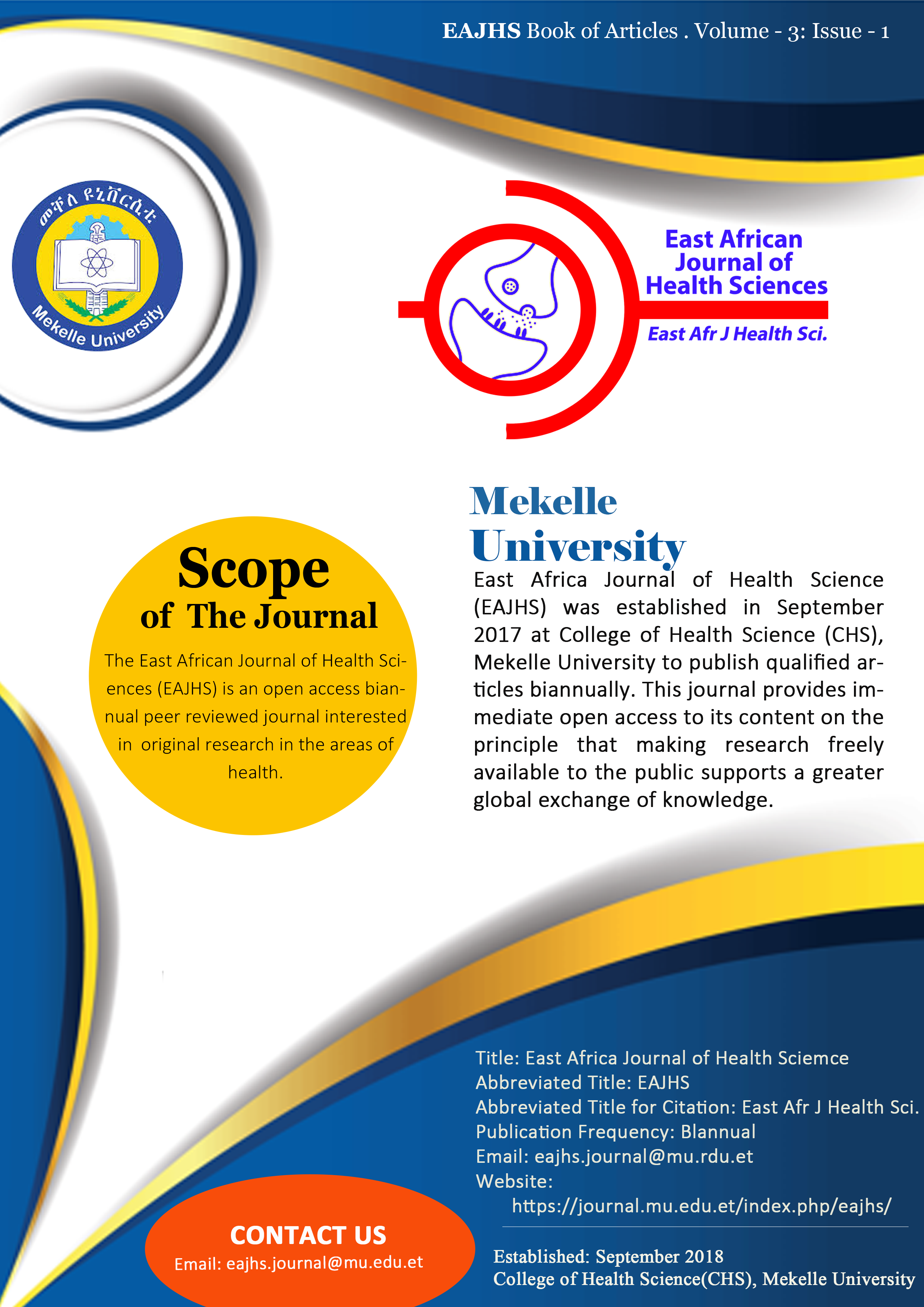Determinants of stillbirth in Tigray, Ethiopia: A facility-based study
DOI:
https://doi.org/10.71624/7efkdx68Keywords:
Determinants, Stillbirth, Facility-based maternal and fetal health care services, Tigray, EthiopiaAbstract
Background: Stillbirth is an unexpected fetal catastrophe and a neglected global epidemic. The epidemiological situation of stillbirth in Ethiopia has not been thoroughly studied, nor does the nation have an established systematic prevention and control program. Assessing the determinants of stillbirth is vital to design appropriate measures for its reduction.
Methods: We conducted a facility-based cross sectional study design to assess the determinants of stillbirth in Tigray from May-August 2018. All births during the study period were included as study participants. We used a pretested structured questionnaire to collect data. Data were entered into Epi info 7 and analyzed using SPSS version 20. Binary logistic regression was fitted and odds ratios (OR) with 95% confidence intervals (CI) were calculated to identify factors associated with stillbirth.
Results: Stillbirth was found to be 27 per 1000 live births in Tigray. Mothers who had not attended school experienced stillbirth 42% times more than those who completed secondary school (AOR =1.42 95%CI: 1.02-1.98). The odds of stillbirth among merchant mothers were four times more compared to self-employed (AOR= 4.01, 95%CI: 1.79, 13.85). Stillbirth is more than two times higher among mothers with no antenatal care (ANC) visits (AOR=2.8; 95%CI: 1.95, 3.99). Moreover, mothers referred to the health center had more than 50% higher odds of experiencing stillbirth (AOR=1.56, 95%CI: 1.17, 2.07). Mothers without partograph were 35% more odds of stillbirth (AOR = 1.35, 95%CI: 1.04, 2.07). Stillbirth was almost three times higher among mothers who gave birth by vacuum (AOR= 2.72, 95%CI: 1.27, 5.84) and forceps (AOR=3.56, 95%CI: 2.58, 12.71). The odds of stillbirth was four times higher in low birth weight babies (1500-2499gram) (AOR = 4.2, 95%CI: 3.12, 6.71).
Conclusion: Level of education, occupational status, and history of ANC visit, referral status, partograph use, instrumental delivery and birth weight were the determinants of stillbirth. Hence, integrated, comprehensive health care targeted to maternal and fetal health care service should be implemented to meet the sustainable development goals.
Downloads
Published
Issue
Section
Categories
License
Copyright (c) 2024 The Author(s)

This work is licensed under a Creative Commons Attribution 4.0 International License.
This journal and its articles are licensed under the Creative Commons Attribution 4.0 International License (CC BY 4.0).


